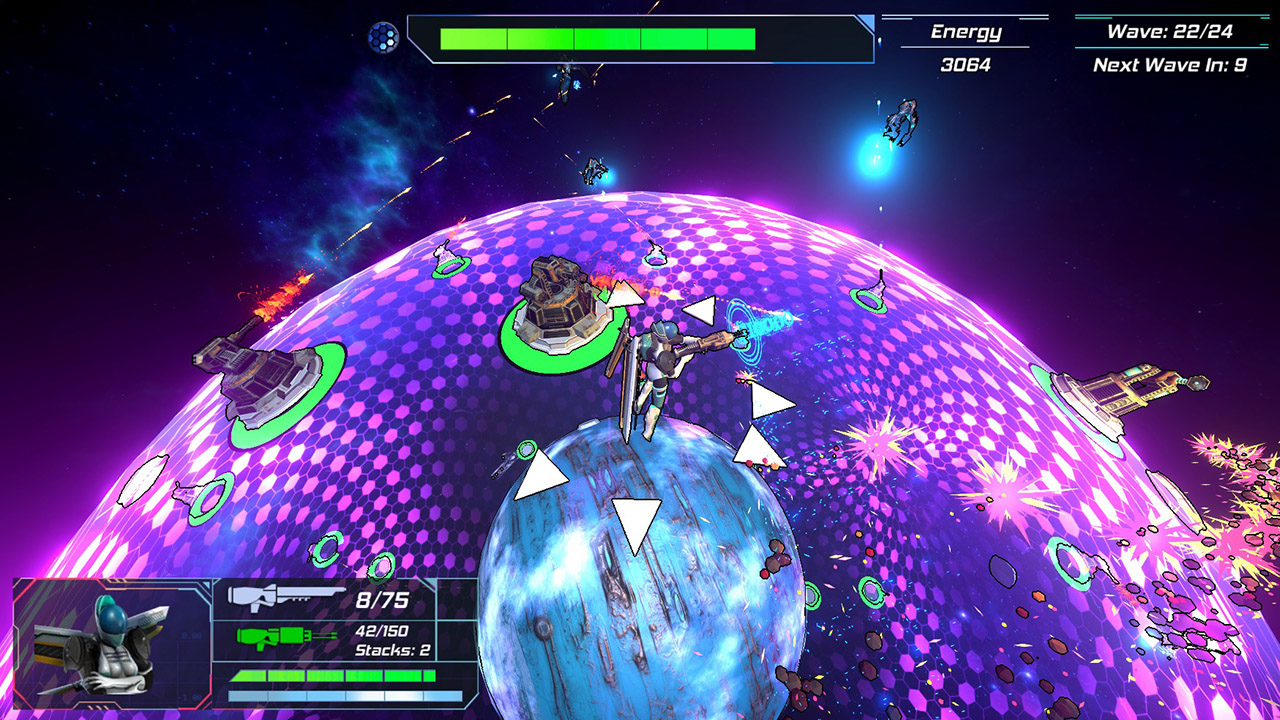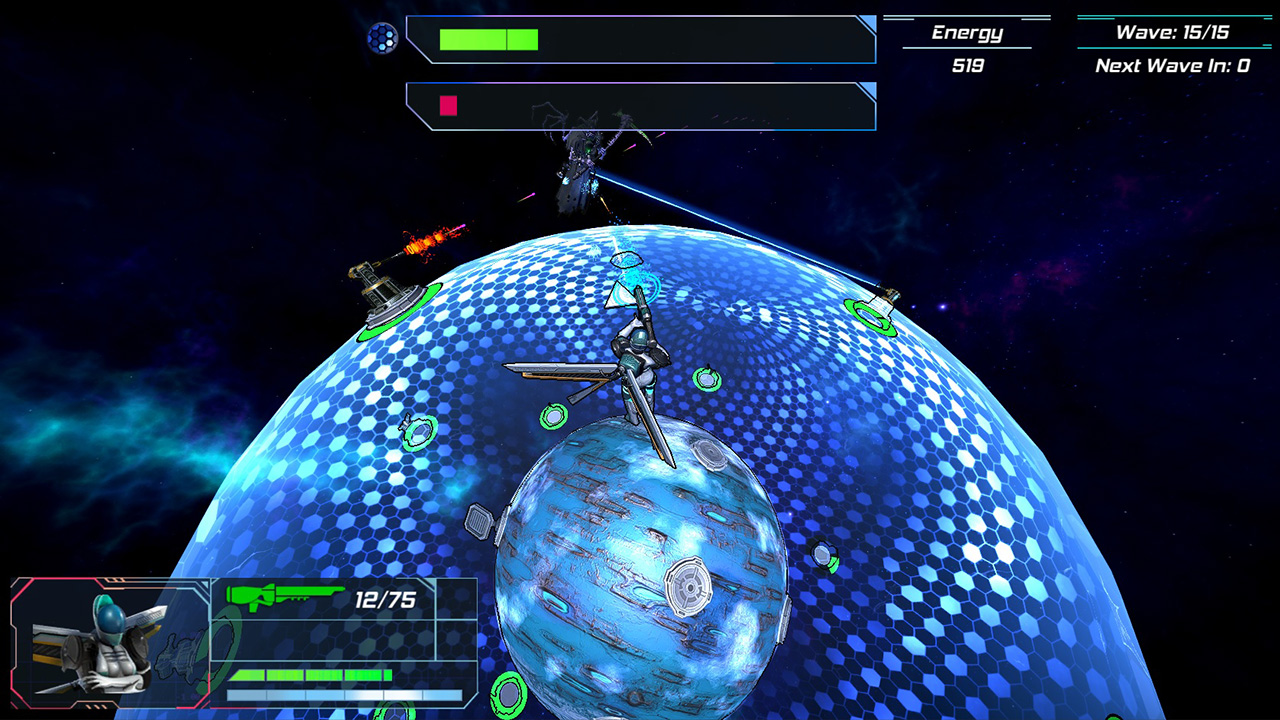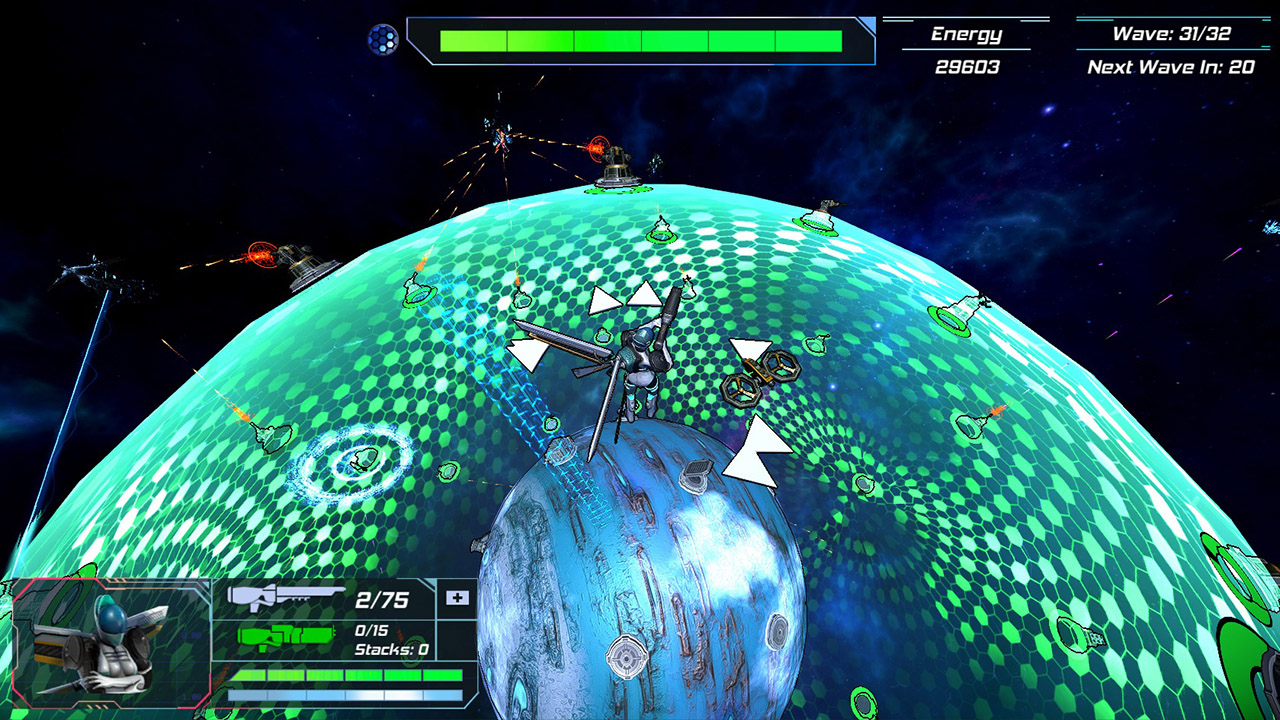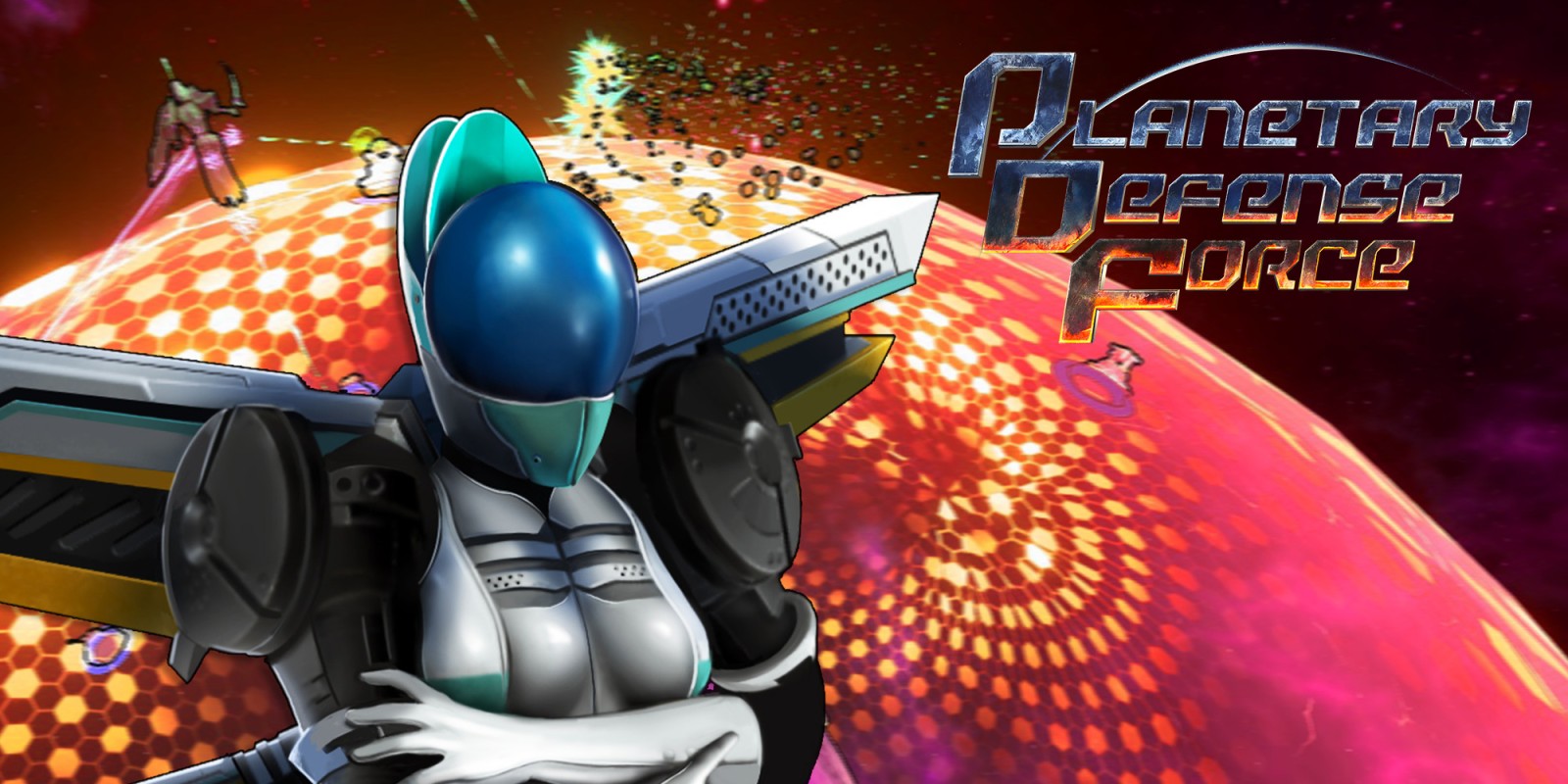[Review] Planetary Defense Force – Nintendo Switch
Planetary Defense Force
Nintendo Switch
Developed By : Blue Sunset Games
Published By : Blue Sunset Games
Category : Action, Arcade, Strategy
Release Date : Jan 15, 2020
Games that encompass multiple genres are pretty common nowadays. You’ll often see RPG elements in a multitude of different games, or games that throw in optional side activities that change gameplay up completely. Planetary Defense Force opts to go for a more extreme mix of genres, mashing together the fast-paced gameplay of twin-stick shooters with town building and turret defence mechanics. Done correctly, it could have been a unique take on what is usually a simple genre. The final product however is a poorly balanced mess of an experience, that does a terrible job of making any of its many systems enjoyable.
You play as a member of the titular Planetary Defense Force, tasked with protecting various planets from ever increasing waves of aliens. Each level plays out in a similar fashion, as you build helpful facilities on the planet itself while creating towers around its protective barrier. Your character controls as you’d expect for the genre, letting you move and shoot in any direction. When described like this, it doesn’t sound too bad. But let us break down each part of the game, to give you a good idea of why this blend of genres does not work.

At the start of each level, you’ll be placed onto the planet, giving you the opportunity to place a few buildings before moving onto the barrier. 99% of the time you’ll be building solar panels, as these give you energy needed to create more buildings and turrets. After creating a handful of buildings, there’ll only be a few seconds left to start creating your defences up top. Turrets have a few differences, such as area damage or slow but powerful shots, but there usually not much reason not to spam the basic turrets due to their lower price.
Firstly, the building elements in Planetary Defense Force are not in-depth at all. There are only a few options for both planetary and defense building, and, as we mentioned earlier, you have little incentive to build most facilities or turrets. A lot of this is to do with just how expensive it is to use some of the buildings. It’s possible to buy weapons from one building type but the costs are so high that, by the time you generate enough energy, the mission is likely already over. The same applies to drones, which can help kill aliens but cost even more. Using solar panels is always the better option, since building turrets early on is the key to not being overrun.

As for your character, it never feels like their shots have much impact thanks to the lack of feedback from their default weapon. It fires quickly and is easy enough to aim, it’s just isn’t satisfying to fire at all. Consumable items like grenades suffer from the same issue, and you’ll likely not buy them after trying them once. While being proactive and shooting aliens is key to completing the later levels, there’s never the sense of power you get from playing more polished twin-stick shooters.
These serious issues all tie into the game’s overall poor balancing, which quickly becomes apparent only a few minutes into the game. After completing a couple of levels on the first planet, the difficulty of subsequent levels ramps up to an absurd degree. Enemies spawn faster than you can kill them, and they quickly drain the planets health before you have a chance to retaliate. After hitting this brick wall, the only solution is to grind an earlier level for gold to unlock permanent upgrades.

The problem with this is twofold. First, and most importantly, it’s not enjoyable to repeat easy missions for the chance to make progress. Unlike other games in the genre where you could improve your gameplay to make up for a lack of upgrades, it is literally impossible to complete even the first planet without extensive grinding. The second problem, which also ties into the first, is that you’re rewarded far more gold for completing easy missions early on than failing harder ones. The very first level which is over quickly gives you 10 times the reward of a mission you fail to complete, due to rewards mostly being tied to the planet’s remaining health.
As a final nail in the coffin, Planetary Defense Force suffers from noticeable framerate drops in both handheld and docked mode. Once larger waves of aliens start appearing, you can say goodbye to the smooth gameplay of early levels. While the game doesn’t look terrible, there’s nowhere near enough happening onscreen to justify just how poorly the game runs. This may not be a game that requires perfect accuracy or quick reactions. However, that doesn’t make up for how unpleasant the game is to look at once things finally start to pick up. A single repetitive background song and grating sound effects only add to this unpleasantness.
Planetary Defense Force is a game that, even with substantial updates to difficulty and performance, will not be a worthwhile experience for even the most diehard twin-stick shooter fans. Attempting to create something new is commendable, but far more time and effort was needed to turn an interesting concept into something that can actually be enjoyed by players.






Buy Now
$4.99

Follow Blue Sunset Games




*The Switch Effect was provided a code for this game*

